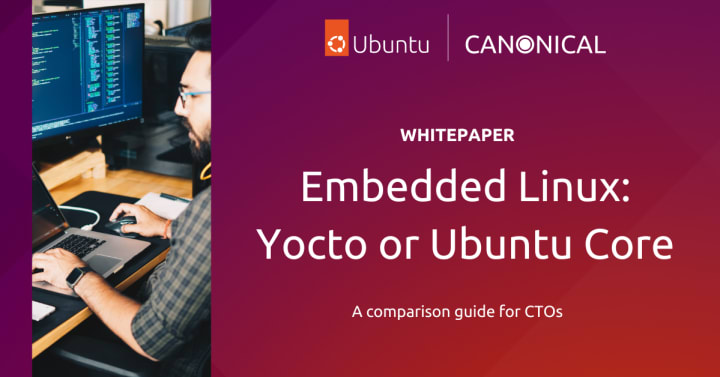Need help choosing an embedded Linux distribution? Get guidance here
Edoardo Barbieri
on 30 November 2022
Tags: Embedded , Industrial , Ubuntu Core

Enterprises are looking to capitalise on the new wave of small form-factor computing and navigate the shift to the edge. Device manufacturers across the world are racing to build embedded, connected devices that will deliver on the promise of the fourth industrial revolution. Many of them are looking to explore data-driven value-chain optimisations, predictive maintenance and or new digital customer experiences.
However, keeping devices in the field up-to-date is a full-time job requiring dedicated kernel engineering teams. When choosing their deployment strategy, device manufacturers must decide whether to roll their own embedded Linux distribution or rely on a commercially-supported OS.
Embedded Linux distribution: Yocto or Ubuntu Core?
The Yocto Project, often chosen for fast prototyping and rapid development, enables developers to create custom embedded distributions. However, as a community-maintained build system, is Yocto suitable for enterprises running embedded Linux in production and at scale? Often, enterprises find it taxing to maintain everything themselves and would prefer to focus on what drives their business by redirecting resources towards core value-add activities.
Ubuntu Core, Canonical’s embedded Linux distribution, is a good alternative for those who want to simplify their embedded Linux journey. It speeds up time-to-market and provides long-term security maintenance, making it a compelling choice for business builders and enterprises.
Which embedded Linux distribution to choose?
Our latest whitepaper offers a thorough assessment between Yocto and Ubuntu Core. We will cover:
- The challenges of managing IoT & edge devices at scale
- The key security pillars before going to production with embedded Linux
- The value proposition and pain points of Yocto and Ubuntu Core
- The architectural differences between Yocto and Ubuntu Core
- A technical comparison between Yocto and Ubuntu Core
In this extensive primer on choosing an embedded Linux distribution, we will directly contrast Yocto and Ubuntu Core on the most pressing challenges facing any developer working on an embedded device: board bring-up, maintenance, updates, security, and many more.
Talk to us today
Interested in running Ubuntu in your organisation?
